Boeing B-29 Superfortress in WWII and Korea
The Role of the B-29 in World War II
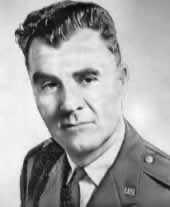 Col. Paul Tibbets, Jr. |
In wartime, the B-29 was capable of flight up to 31,850 feet at speeds of 350 mph. Designed as a high-altitude daytime bomber, the B-29 flew more low-altitude nighttime incendiary bombing missions.
In December 1943 U.S. Army Air Forces leadership committed the Superfortress to Asia, where its great range made it particularly suited for the long over-water flights against the Japanese homeland from bases in China.
The first B-29s arrived at Allied airfields in India and China in April 1944. Flying from India, B-29s first saw combat on June 5, 1944, when 98 planes struck Bangkok. A month later, B-29s flying from Chengdu, China struck Yawata, Japan in the first raid on the Japanese home islands since the Doolittle Raid in 1942.
During the last two months of 1944, B-29s began operating against Japan from the islands of Saipan, Guam and Tinian. As many as 1,000 Superfortresses at a time bombed Tokyo, destroying large parts of the city.
Enola Gay and Bockscar
The B-29 is most often remembered by many for two missions that occurred in August of 1945, over the Japanese cities of Hiroshima and Nagasaki that lead to a quick end of World War II.
Colonel Paul Tibbets, Jr. was born February 23, 1915, son of Enola Gay and Paul Warfield Tibbets.
An experienced pilot in World War II, he reported to Colorado Springs in September, 1944, for a top secret assignment - to organize a bombardment group to deliver the atomic bomb.
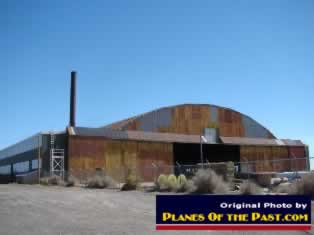 The B-29 hangar at Wendover Air Field Photo by Planes Of The Past |
Tibbets' force, the 509th Composite Group, included 15 B-29's with special "Silverplate" modifications, and 1,800 men. The Silverplate B-29s had modifications necessary to deliver atomic weapons, which included an extensively modified bomb bay with pneumatic doors, special propellers, modified engines and the deletion of protective armor and gun turrets.
The 509th settled on Wendover Air Field on the Utah-Nevada border as their base due to its remote location. Special facilities were built to accommodate the B-29s, including a hangar which is being restored today (see photo to the right).
Colonel Tibbets piloted the B-29 "Enola Gay" (Serial Number 44-86292) on August 6, 1945, and dropped the "Little Boy" atomic bomb over Hiroshima, Japan. He had named the plane after his mother, Enola Gay Tibbets. The plane had been built at the Glenn Martin plant in Omaha, Nebraska.
Three days later the "Fat Man" atomic bomb was dropped on Nagasaki, Japan by the B-29 "Bockscar".
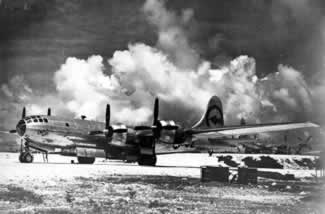 Boeing B-29 "Enola Gay" during World War II Boeing B-29 "Enola Gay" during World War II |
On November 6, 1945, the "Enola Gay" was flown back to the 509th's new base at Roswell Army Air Field, New Mexico. The decision was made to preserve the aircraft, and on July 24, 1946, the aircraft was flown to Davis-Monthan Air Force Base, Arizona, in preparation for storage.
The following month the title to the aircraft was transferred to the Smithsonian Institution and the B-29 was removed from the USAAF inventory. From 1946 to 1961, the Enola Gay was put into temporary storage at a number of locations across the country.
Today, "Enola Gay" is on display at the Udvar-Hazy Center of the Smithsonian at Dulles Airport in Washington, D.C.
"Bockscar" is on display at the National Museum of the United States Air Force at Wright-Patterson Air Force Base in Dayton, Ohio.
The B-29 Superfortress in the Post-WWII Era and the Korean War
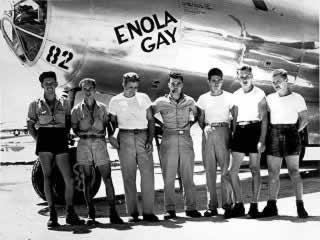 The crew of B-29 "Enola Gay" at Wendover Field Pilot Col. Paul Tibbets in center |
The end of World War II caused production of the B-29 to be ended, with the last B-29 built at Boeing's Renton, Washington, factory on May 28, 1946.
Many of the aircraft were sent for storage, and ultimately scrapping at aircraft storage and dismantling facilities around the U.S. The remaining B-29s helped build the initial bomber inventory of the Strategic Air Command when it was formed in March of 1946.
The B-29 saw military service again in Korea between 1950 and 1953, battling new adversaries: jet fighters and electronic weapons.
In Korea, B-29s flew 20,000 sorties, and B-29 gunners were credited with shooting down 27 enemy aircraft.
With the arrival of the Convair B-36 in the Air Force inventory, the B-29 was reclassified as a medium bomber.
The last B-29 in squadron use retired from service in September 1960.
Rush Order: One Story of Thousands in World War II
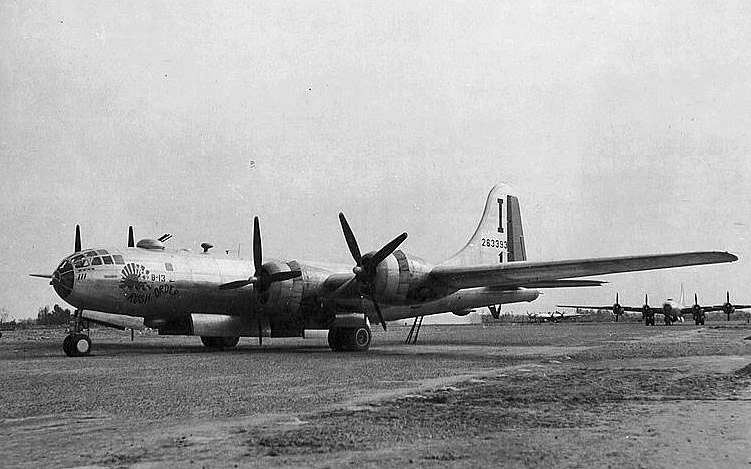 B-29 Superfortress "Rush Order" S/N 42-63393, of the 58th BW, 462nd BG, 768th BS |
The Boeing-designed B-29-10-BA Superfortress Serial Number 42-63393 was built by the Bell Aircraft Company in Marietta, Georgia. It was delivered to the Army Air Corp on May 30, 1944, and assigned to the 768th Bombardment Squadron, 462nd Bombardment Group.
The aircraft was initially assigned to Major John Stewart Slack, Jr. and his crew, and began combat missions only 15 days after the plane was delivered. The name "Rush Order" was given to the plane and appropriate art painted on the nose.
Major Slack was born in New Orleans, Louisiana, in 1915, and later graduated from LSU. He entered service in 1940 with the Army Air Corp, and after training in the U.S. departed on April 13, 1944 and arrived at his assigned base in Piaradoba, India, in early June. He later also flew from Kiumglai, China. His first mission was on June 5, 1944, to bomb Bangkok.
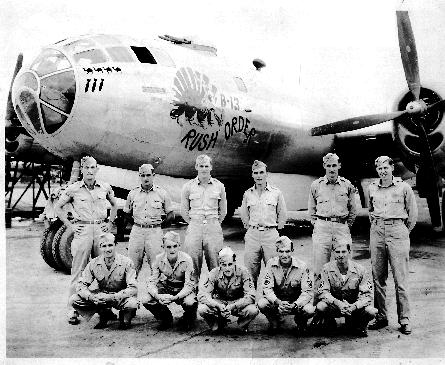 Major John Slack and the crew of B-29 "Rush Order" |
On January 6, 1945 the 58th Bomb Wing launched an air attack against Japan consisting of forty-nine B-29s. That day Major Slack was piloting another B-29, S/N 42-65254, and leading a group of six planes on a bombing mission against the Omura Aircraft Factory on the island of Kyushu Japan.
The mission was attacked by enemy fighters and Major Slack's bomber was heavily damaged, losing two engines. Slack was able to keep the plane in the air for more than 35 minutes, but finally had to ditch in the ocean. Rescue planes and submarines were unable to locate the crew. On that mission, one B-29 was lost, Rush Order. Major Slack, aged only 29, and ten other crewmen lost their lives.
Slack received the Distinguished Flying Cross with Oak Leaf Cluster, the Air Medal with Oak Leaf Cluster and the Purple Heart.
I was most fortunate to enjoy a long friendship with Major Slack's son, John Stewart Slack III, for many years. He was proud of his dad's service. Stewart was a fine man, and good friend, and is missed!
"Rush Order" survived the war, and was later reclaimed at Keesler Field in Gulfport, Mississippi, on March 20, 1946.
Nose art on the B-29 Superfortress "Rush Order" |
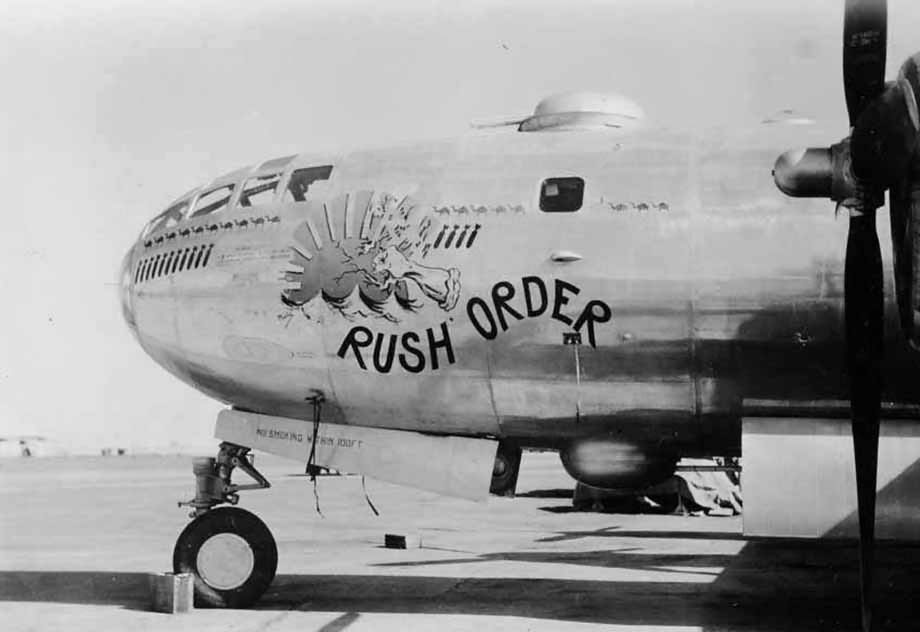 |
B-29 Enola Gay and Bockscar Photos by the Author
B-29 Superfortress "Bockscar" at the National Museum of the U.S. Air Force in Dayton, Ohio |
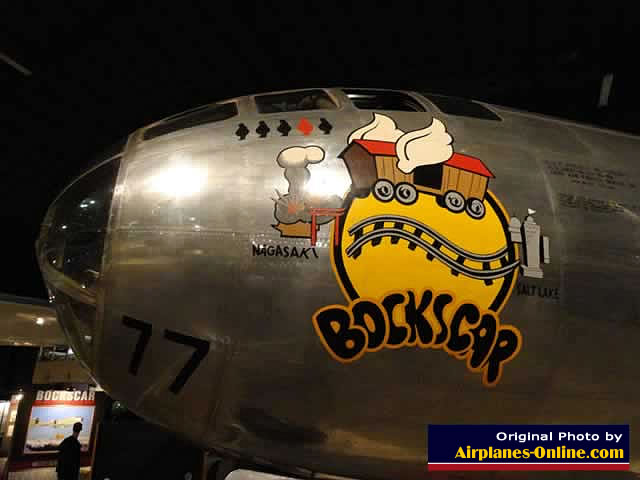 |
B-29 Superfortress "Bockscar" |
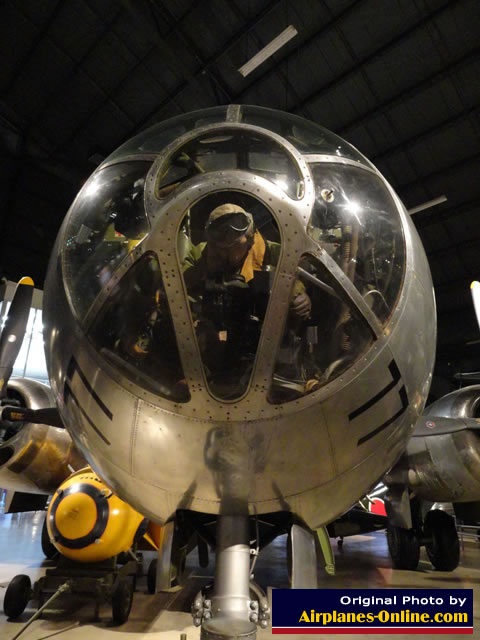 |
B-29 Superfortress "Enola Gay" at the Udvar-Hazy Center in Washington, D.C. |
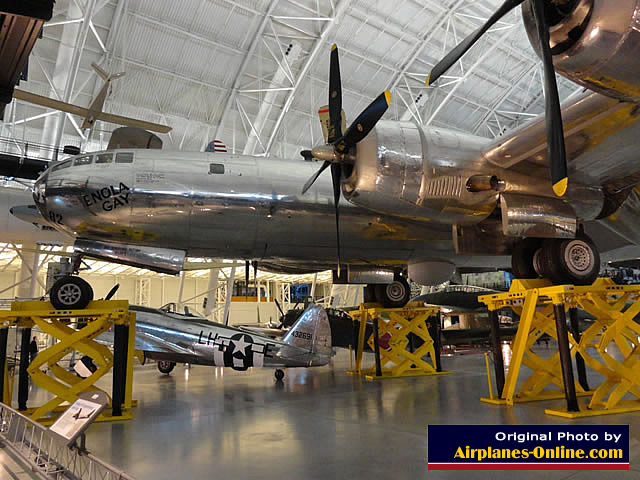 |
B-29 Superfortress "Enola Gay" at the Udvar-Hazy Center |
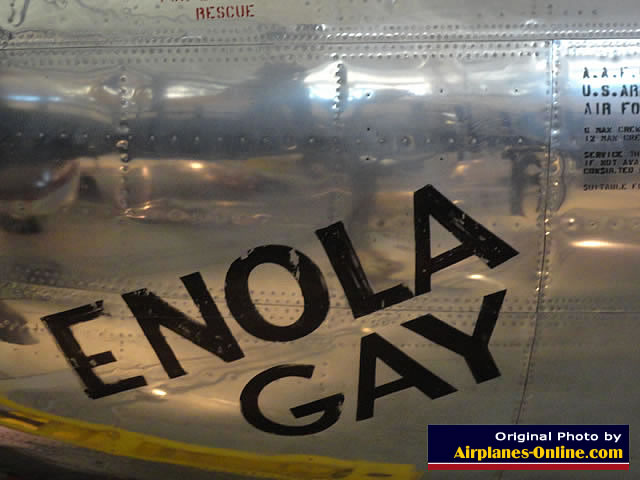 |
USAF B-29 Photos
Boeing B-29 Superfortress over the runway during World War II |
Boeing B-29 Superfortress "Dauntless Dotty" bomb loading in WWII |
Boeing B-29 Superfortress "The Outlaw" |
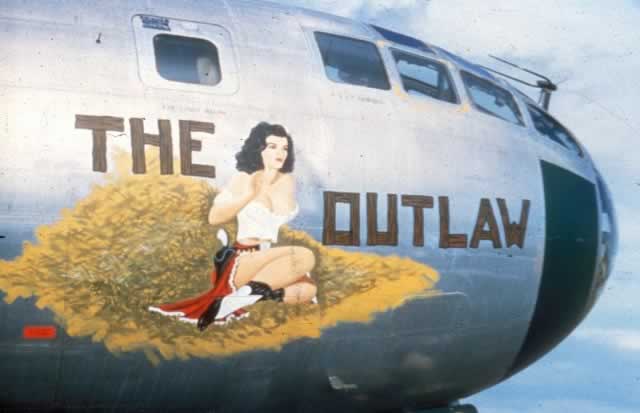 |
Boeing B-29s on the Tarmac |
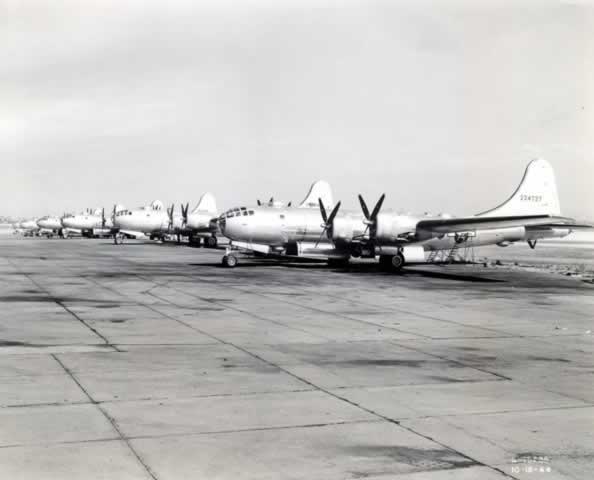 |
Boeing B-29s parked on the tarmac during WWII |
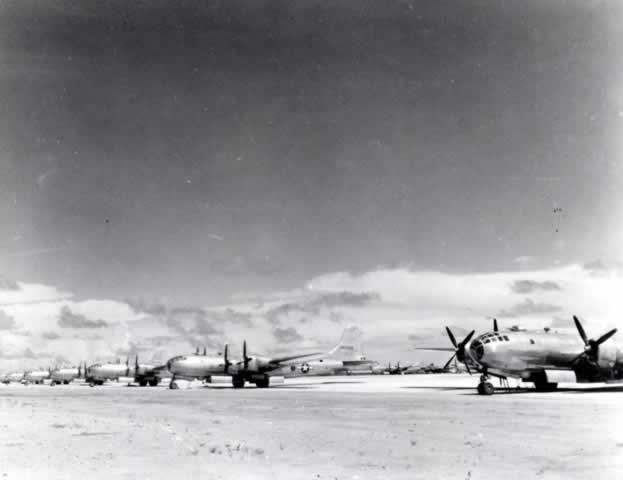 |
Boeing B-29 Superfortress |
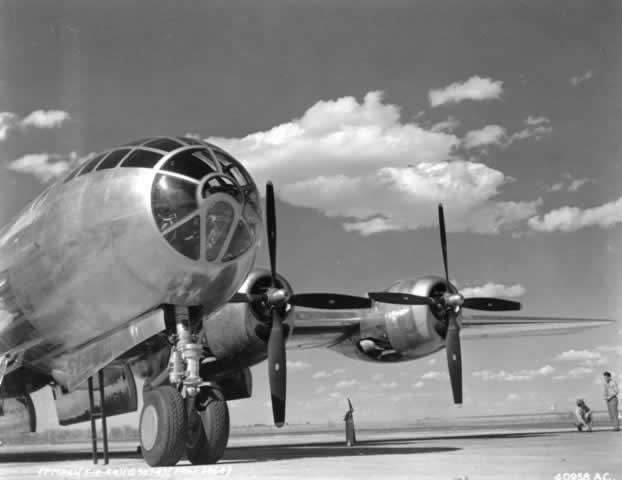 |
Boeing B-29s on the flight line, with S/N 484002 in the foreground |
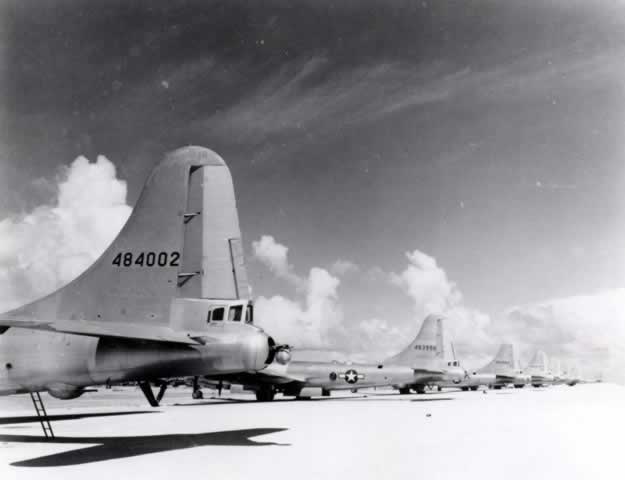 |
More about the B-29 Superfortress |
|||||

